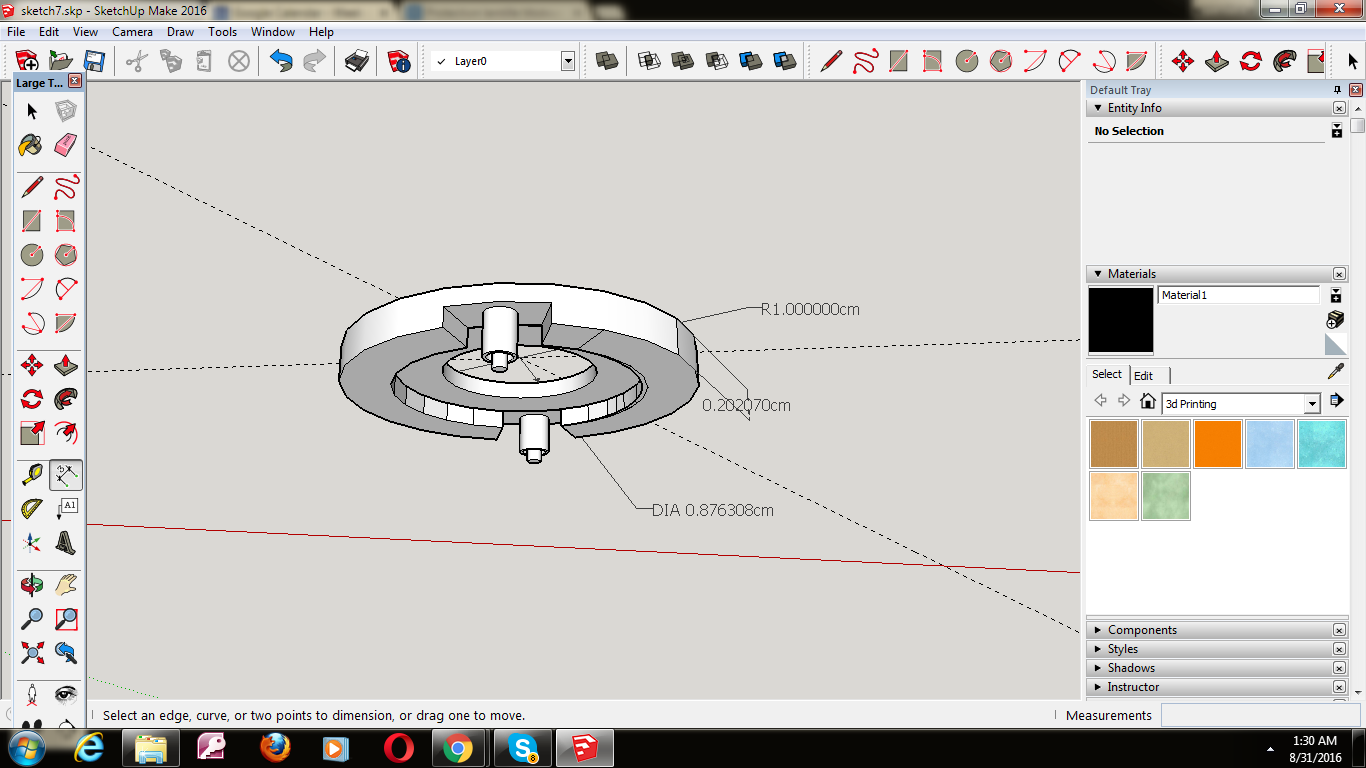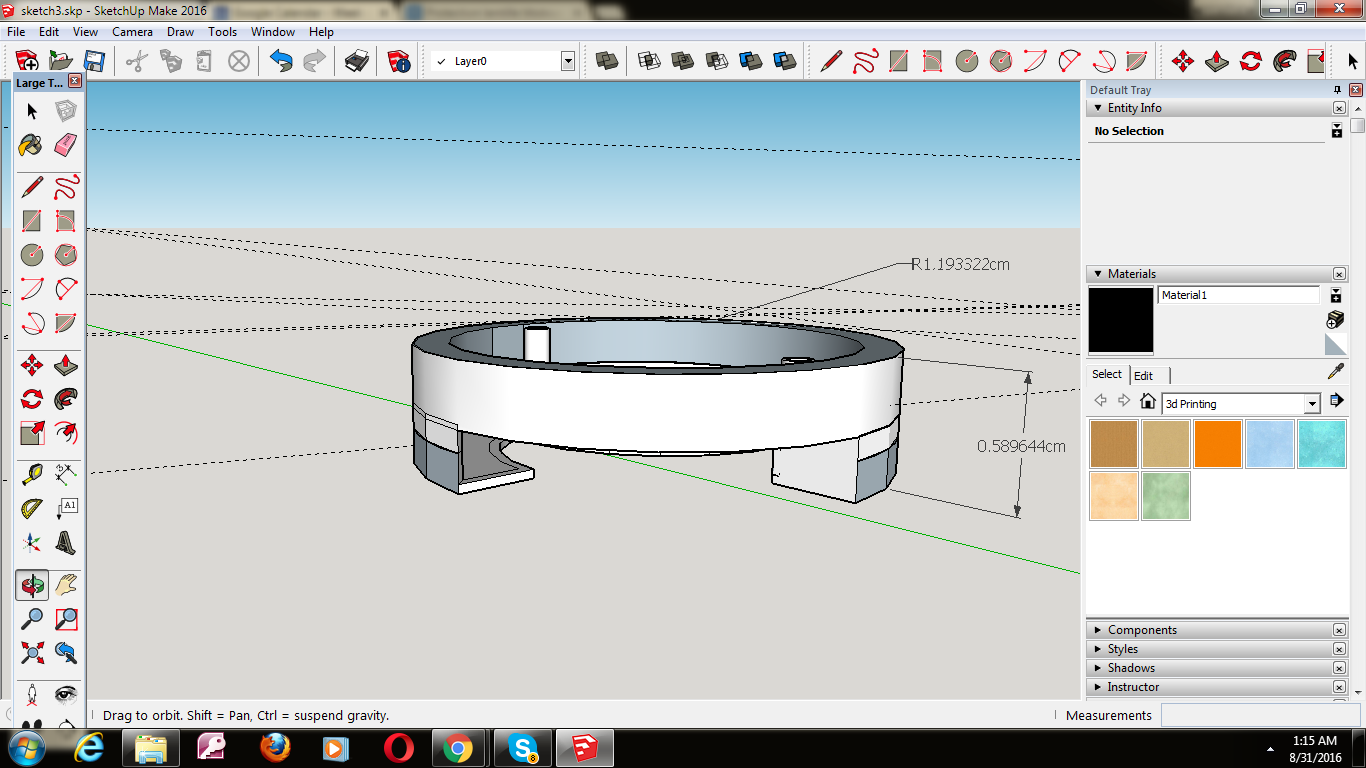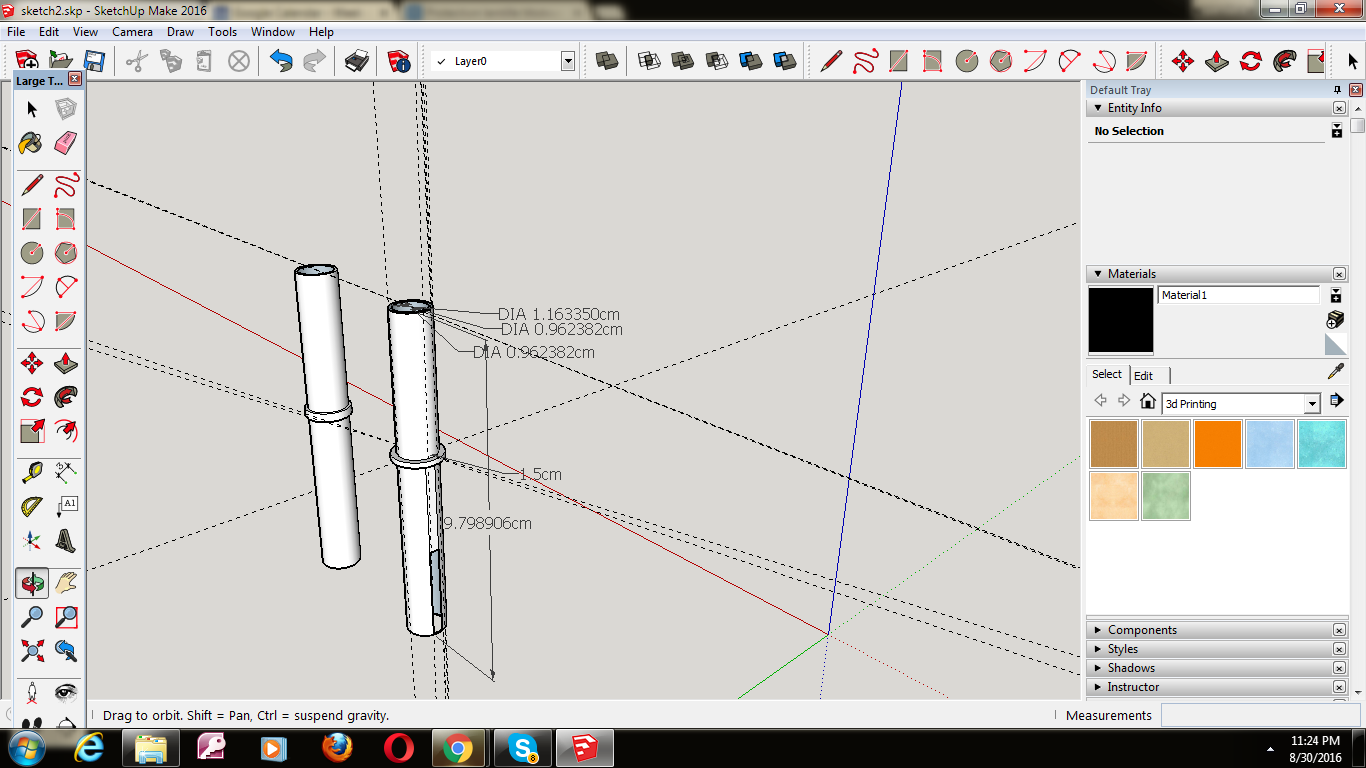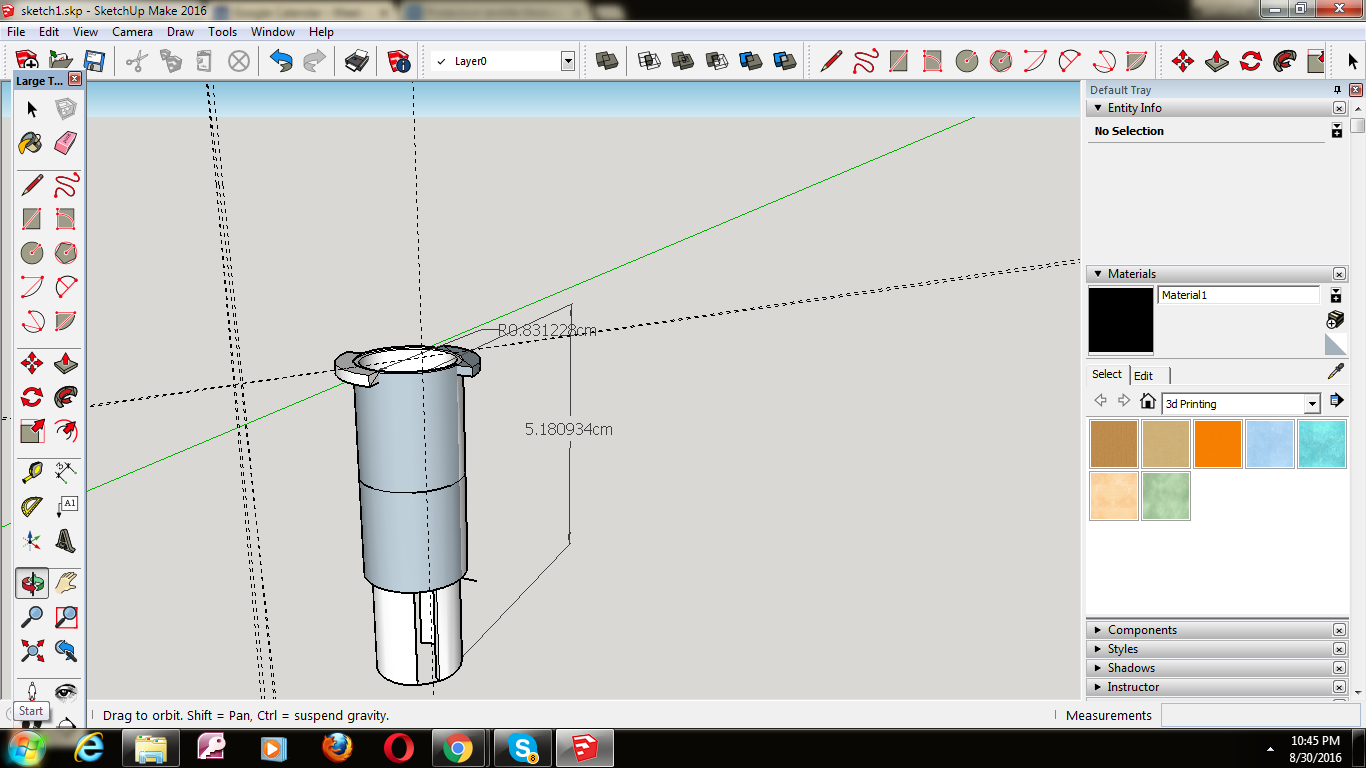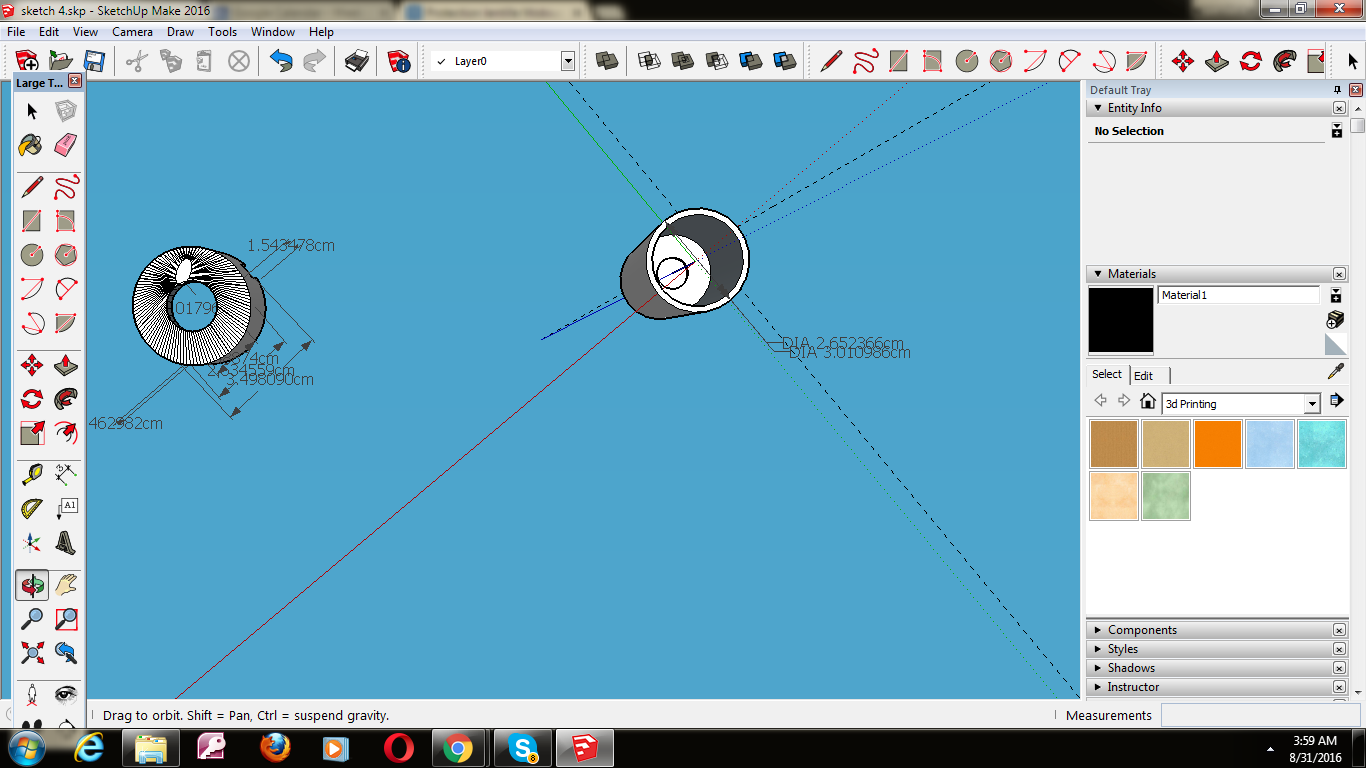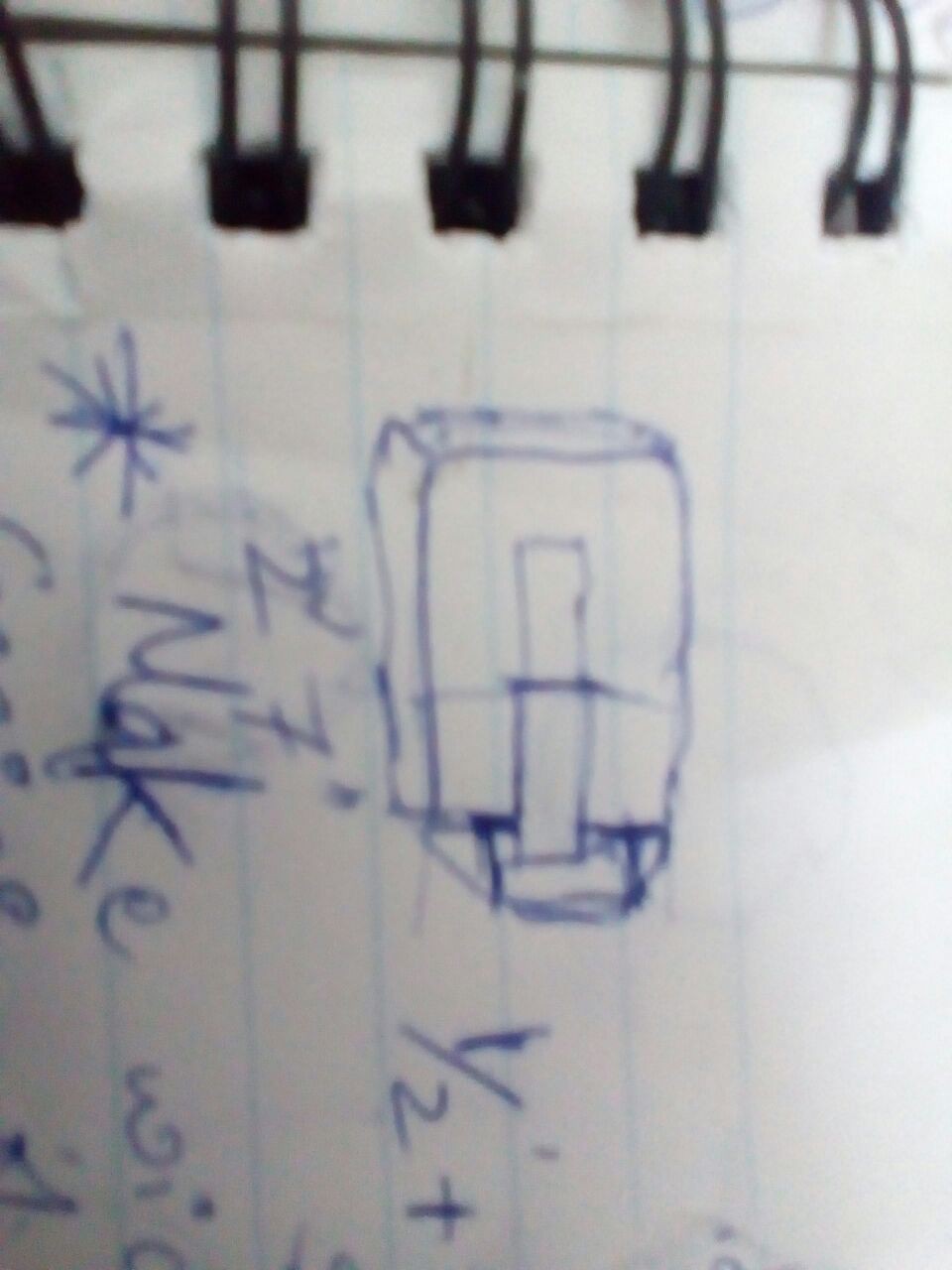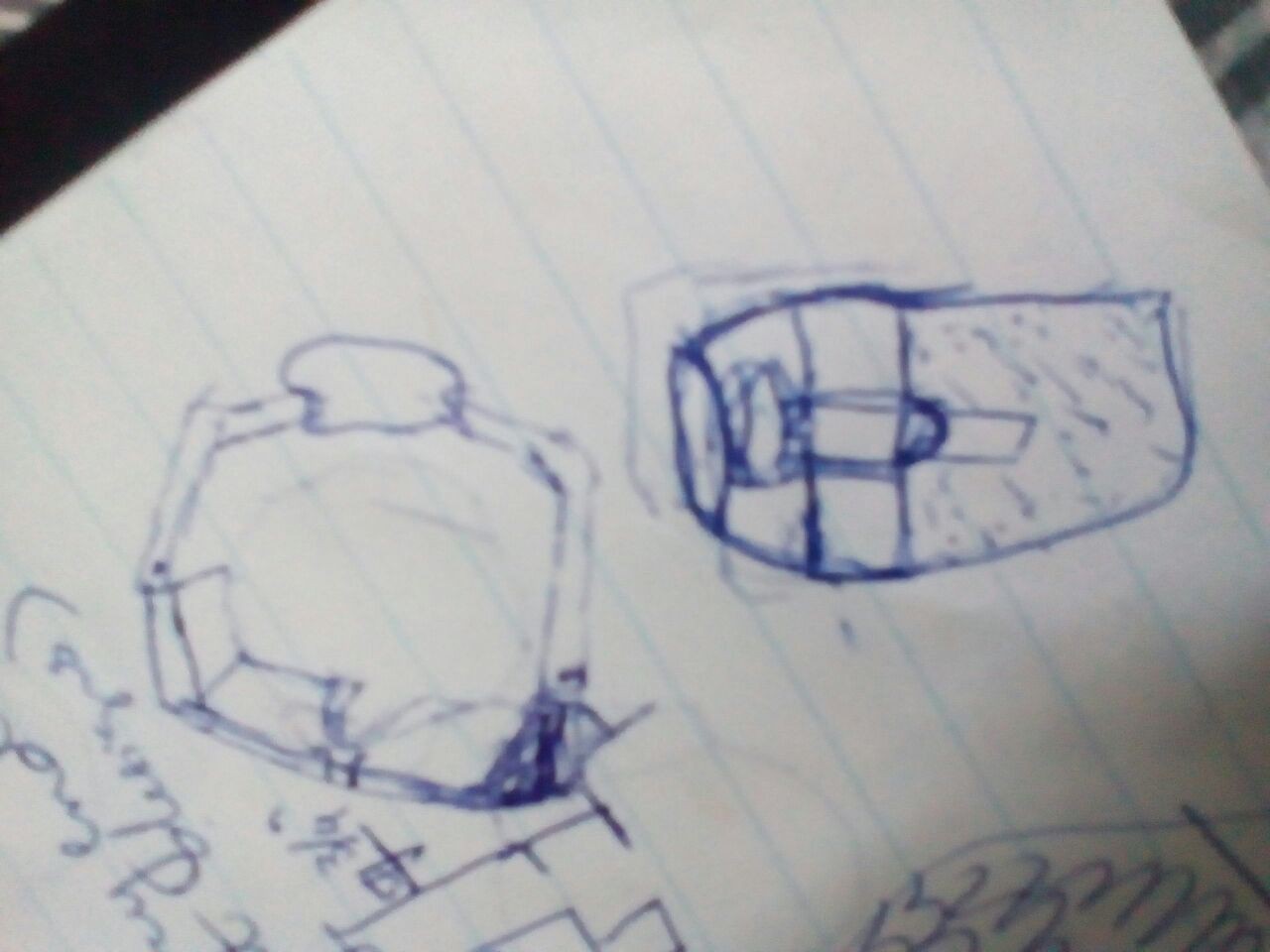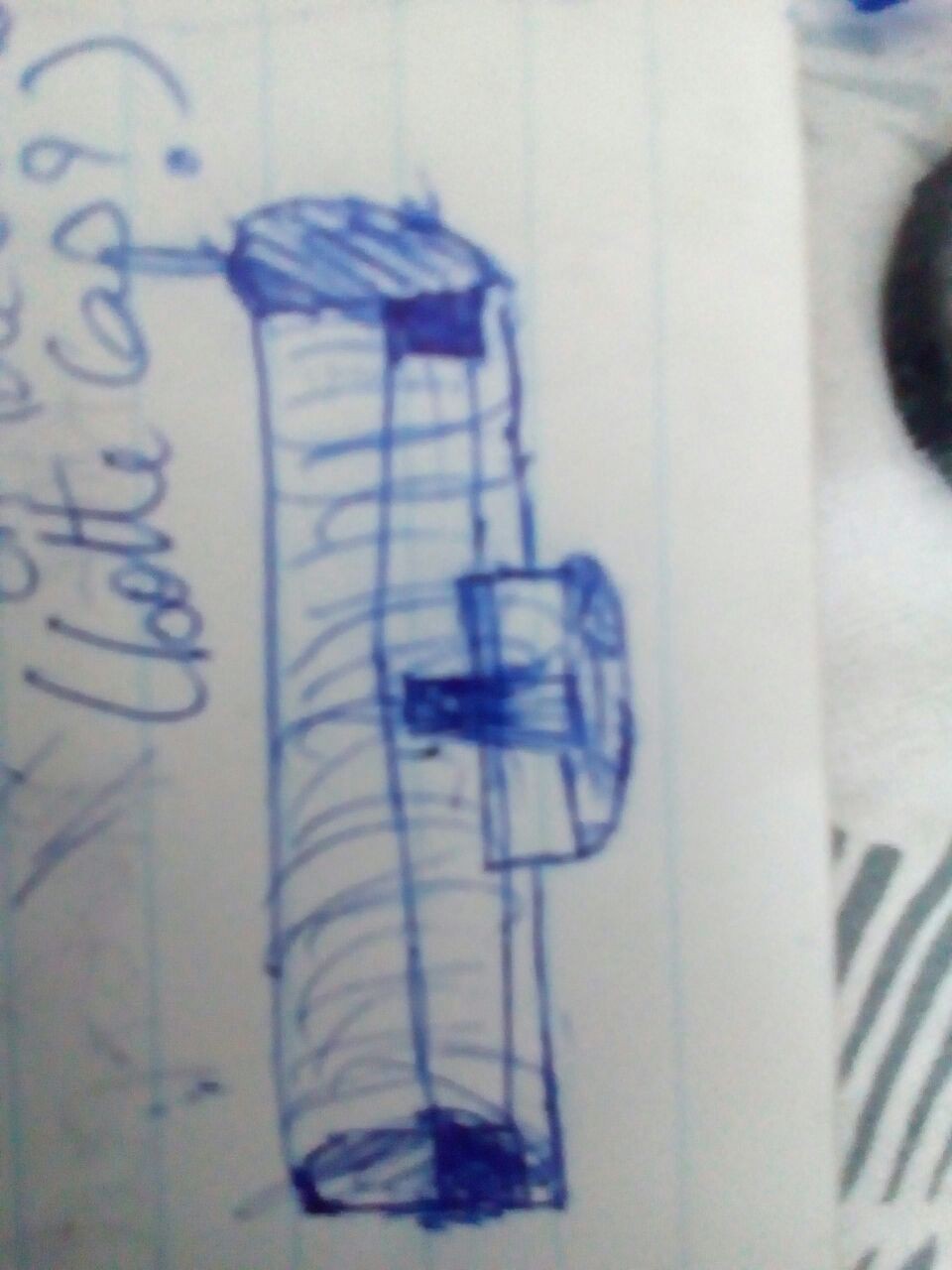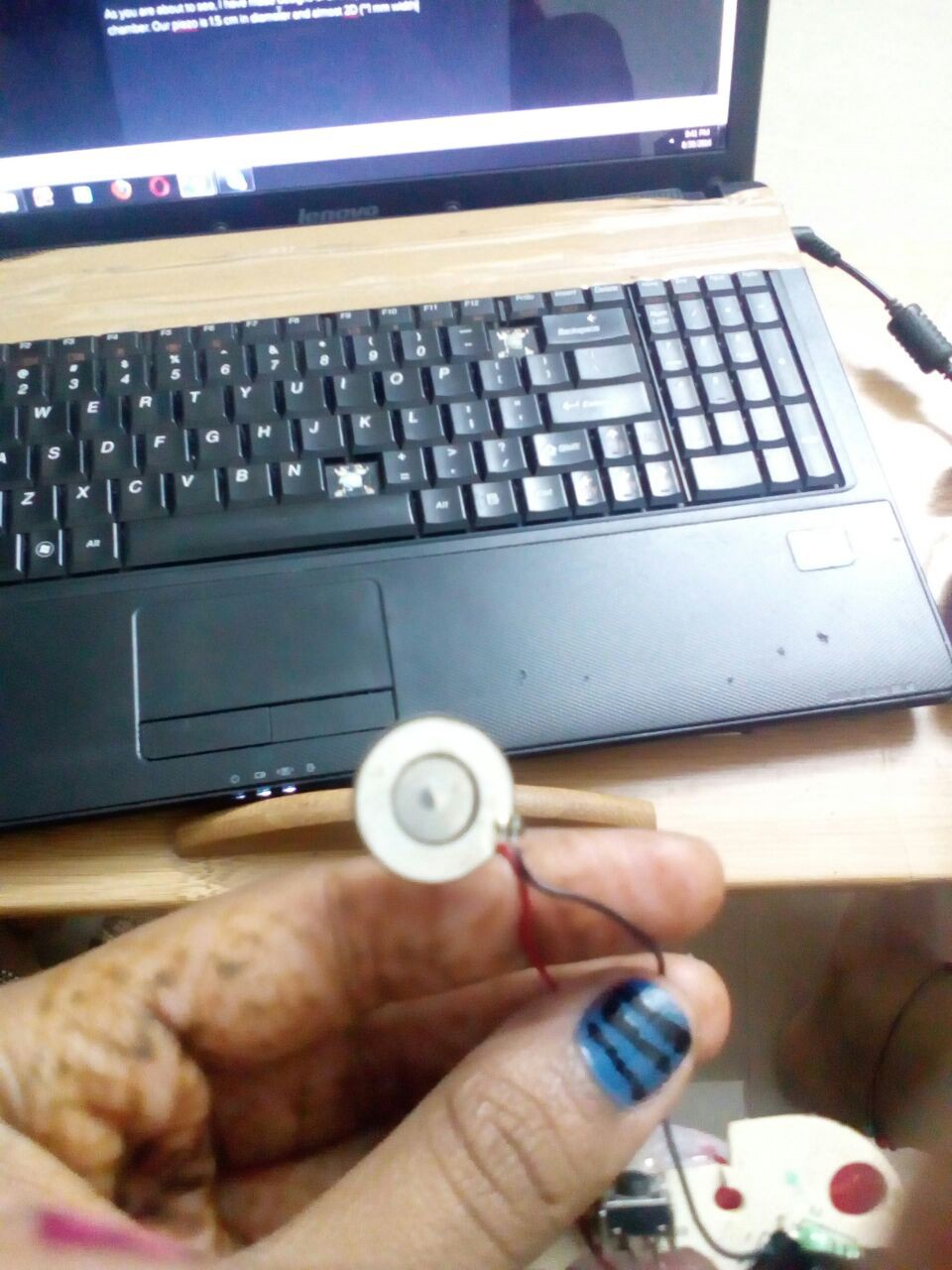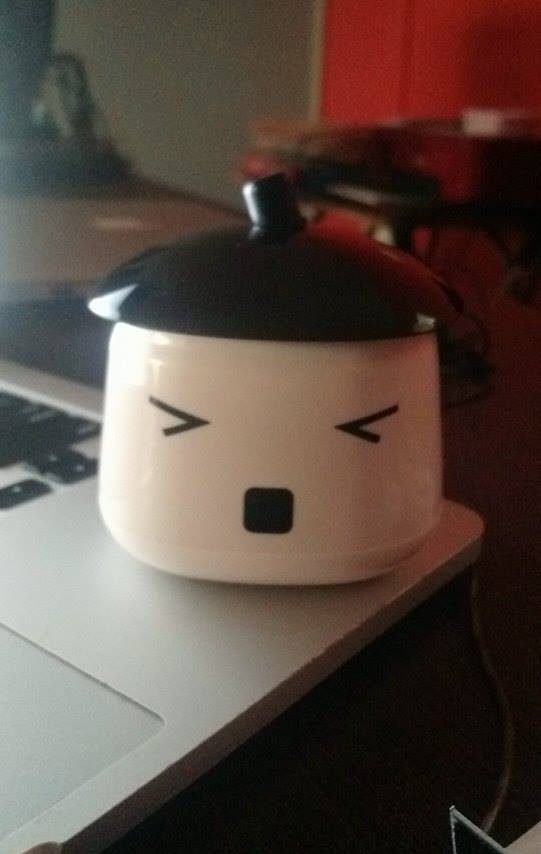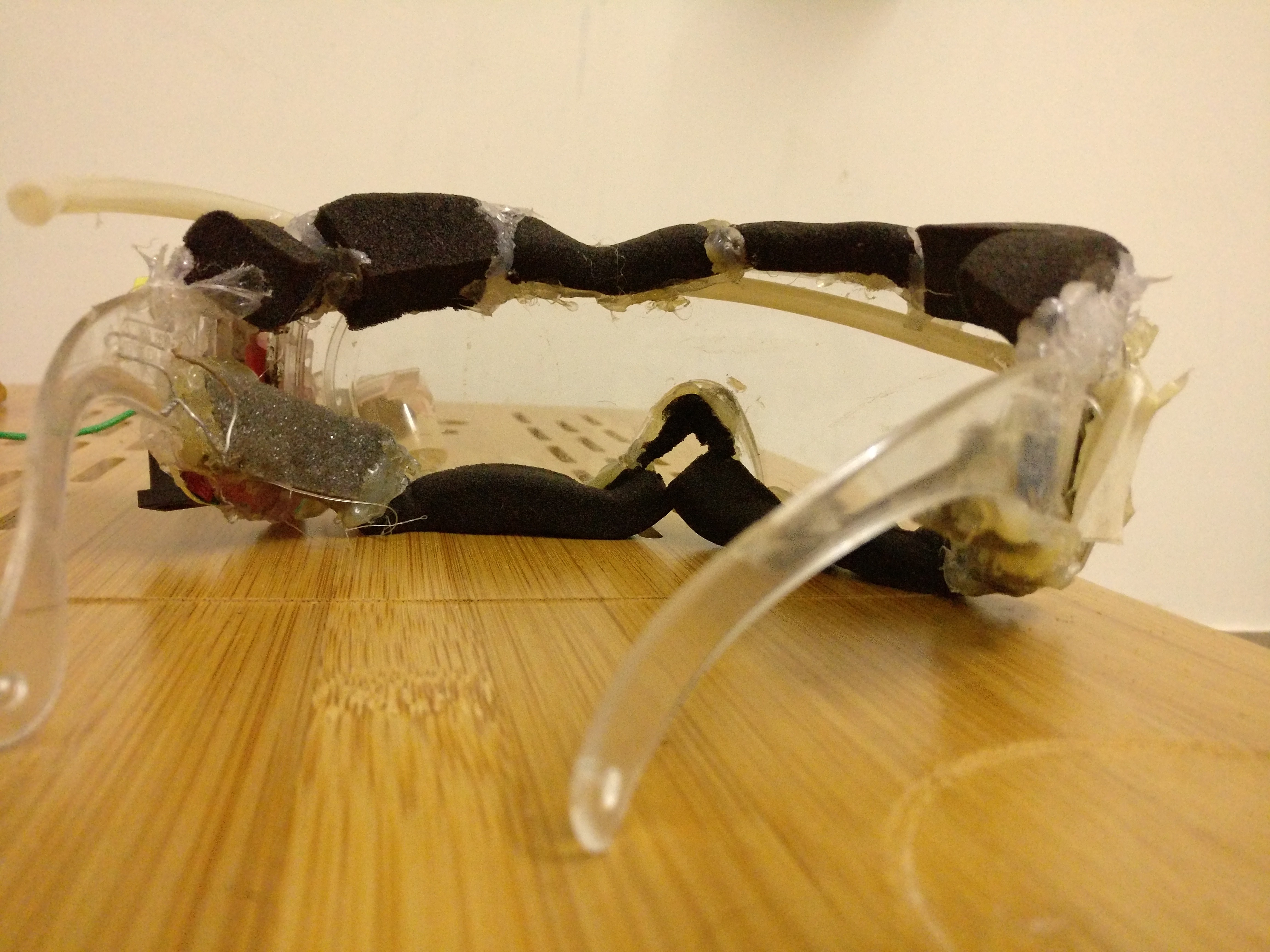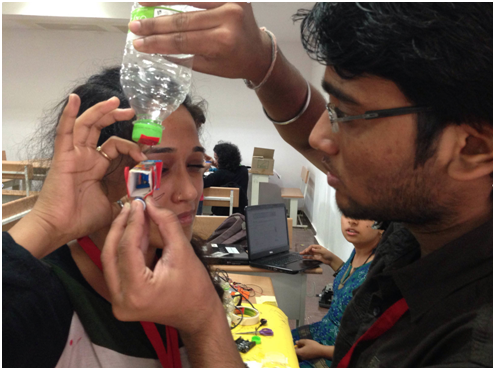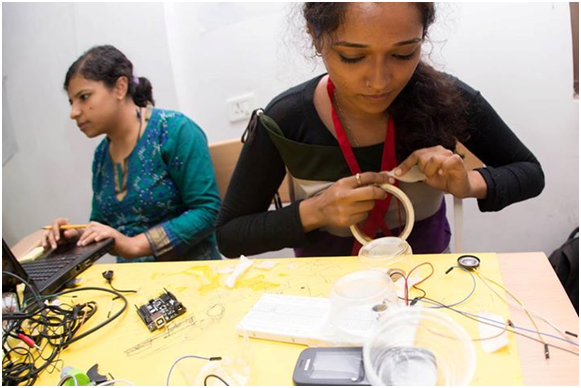-
Making of the IrIS - CAD
08/30/2016 at 17:05 • 0 commentsThe wick container is suspended with a spring in the latch container. The bottommost chamber contains water followed by the latch chamber and wick container. The wick container with openings on the sides protrudes into the tightly sealed water chamber.
The wick container is suspended in the latch container using a spring. While latching to the piezo cap, spring is compressed and the wings turn and fit into the stopper slots.
Attaching a few pictures below. The CAD files are open sourced for others, would soon register for the Creative commons if this design works out. So no copyright violations meanwhile, okay!!!
Cap1.png
Top1.png
wick_cont.png
latch1.png
bottle and cap.png
![]()
![]()
![]()
![]()
![]()
-
Design Dialogue 2 - Component iterations
08/30/2016 at 16:57 • 0 commentsI have experimented with all shapes for the mist producing chamber. The piezo is the main component with diameter of 1.5cm. The height of the element is ~1mm.
I thought of two ideas for the chamber. The first is like a standard room humidifier design with a cylindrical spring loaded latch.
![]()
![]()
The second design in a strap on piezo cap on horizontally oriented wick container. The strap are press fit on the cylindrical surface.
![]()
![]()
Among the two pics first is horizontal orientation while the later is vertical.
![]()
-
Design Dialogue 1
08/30/2016 at 16:01 • 0 commentsI have been working on this for the past week to make CAD models for 3D printed prototype. This will enable us to design from a product perspective. This time, we are looking at the design of the parts and mechanisms in the eye gear. Design Points:
- Internal Mist formation control - Source on top of the nose.(test corner of the eye design as well
- Can we make wick a carrier of water?
- Hinges of the eye frame at the very end of the frame.
- Light Design
:- Attaching example pictures from notes
![]()
![]()
-
Prototype 3
06/19/2016 at 20:46 • 0 commentsSTEP- 1: This time, I am going to test the humidifier kept in the room nearby to the patient. The humidifier is a mini USB powered device which has electronic transducer.
![]()
The example humidifier is from amazon - http://www.amazon.in/Cyanics-Portable-Bedroom-Humidifier-Powered/dp/B006Z04LRM
You can buy other such cheap electronic humidifiers easily available online.
Step- 2: Testing the driver circuit - These humidifiers have USB power driver circuits that can be easily hacked into. [More updates will come soon as I start ordering and building the prototype with another humidifier]
I have ordered two filters and three ultrasonic transducers as well to build the 'jugaad' prototype .
Step 3 : Designing the Eye gear.
Step 4 : Integrating the humidifier with the eye gear
-
Prototype Version 2
05/16/2016 at 21:56 • 0 comments![]()
This model has an ultrasonic atomizer from a portable mini humidifier. This model is connected to set of small no of circuits which absorb water from wick and atomize into mist.
This can be used to maintain humidity in the eye chamber. However, some design constraints were encountered.
1. The mist after some time condenses and forms water droplets. This leads to unchannelled water accumulation
2. The foam does not give a complete sense of comfortability. Need to experiment other low cost padding materials
3. The accompanying circuitry and battery must be able to fit in the pocket ing electrical wire travels from pocket module to the glasses. Here the atmoizer is activated via electrical signals
4. The eyegear must look socially acceptable
5. Power constraints - Battery run/ USB run device
-
Prototype Version 1
05/16/2016 at 21:37 • 0 commentsWe used Goggles attached to foam and mist forming mechanism by small pager motors. The water was stored in the two tanks on both sides of the goggles.
It consumed power of 1 AA battery.
![]()
Simultaneous alternatives explored:
- Pressurized air forced into water chamber to cause turbulence and produce micro droplets.(like a nebulizer) We can try using very small air pumps used in aquariums that can be directed to water reservoir with force. (http://www.ebay.com/bhp/mini-aquarium-air-pump) 2.5 dollars.
- Ultrasonic vibrators: Very small vibrating elements coupled to a membrane which acts as a wick to hold water droplets which get dispersed due to vibrating motion. (Testing with Speakers)
![]()
-
Final Deliverable
05/16/2016 at 20:53 • 0 commentsProject Goals/Objectives --- e.g., what is the final deliverable, and what characteristics must it have in order to effectively address the motivating challenge?
The final product is an enclosed chamber for moisture retention and enhancement around the eyes without any hinderance to the vision for dry eye patients. It must be very low cost, easily available, softly wearable and also be provided with instructions for making a DIy model.
Humidifeyes
Eye Moisture Retention and Rehabilitation Goggles: Cost effective assistive device for prevention and treatment of dry eye syndrome.
 spandana.cheruvu
spandana.cheruvu